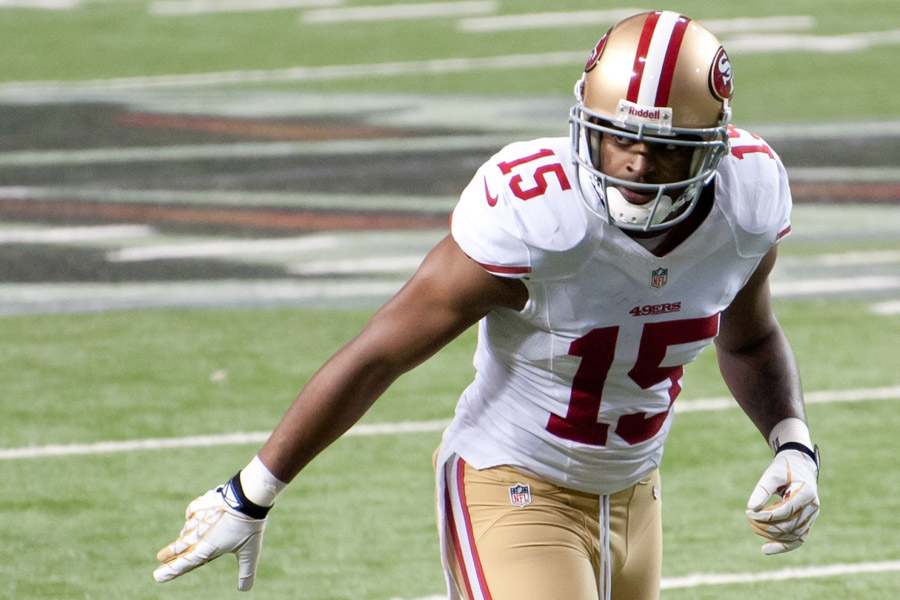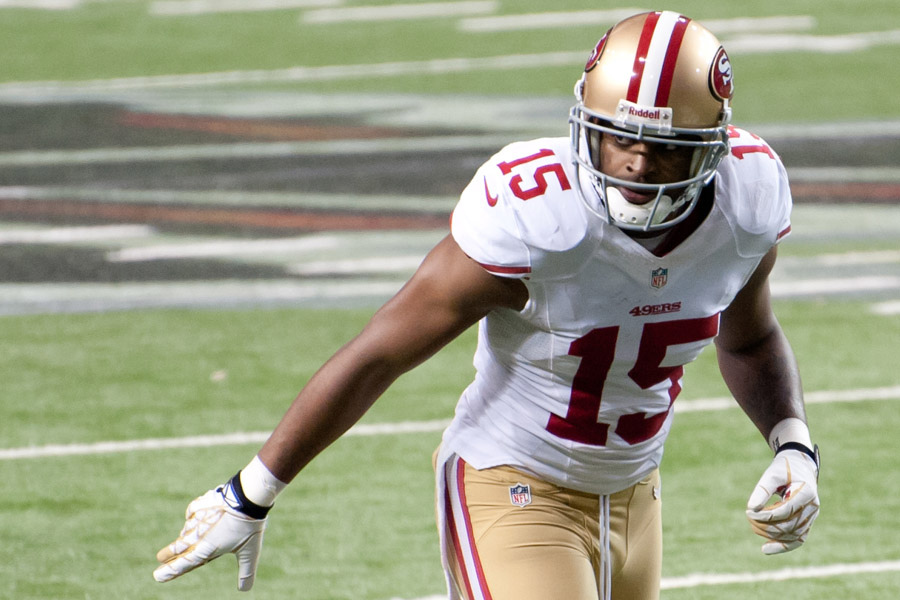
Manziel isn’t as haphazard and reckless as you think. The question is will the quarterback’s style become haphazard and reckless at the elevated level of pro football?
The Boiler Room Series is my attempt to capture the state of an NFL prospect’s development into a single play. This is an impossible task, but what if you have a limited number of plays to state your case about a prospect to the leadership team within your organization? If you’ve researched enough about this player, a cut-up of choice plays with a short presentation can provide a decent assessment of strengths, weaknesses, and potential fit for the team. You can read the rest of my Boiler Room Series here.
I have already performed an extensive analysis of Johnny Manziel’s game in a Futures column this fall, but the Aggie’s starter is one of the more intriguing players I have studied in nine years. Sigmund Bloom’s parallel between Manziel and a boxer fits. I’ll even put a name to the parallel that Bloom didn’t, because there are similarities of unique, unorthodox technique: Muhammad Ali.
Jack Slack’s analysis of Ali’s boxing technique at Bloody Elbow is worth a read if you’re a fan of the sweet science. Slack breaks down the way Ali would maintain techniques that were difficult for opponents to prepare for such as using an upright posture, backing straight away from punches, employing the inside slip, and throwing the odd-angled “Anchor Punch” that lacked leverage, but had perfect timing.
Ali was great at using his athleticism to sucker opponents into his world and then sending them out the door on their backsides. I see these similarities when I watch Manziel. The A&M quarterback has a more powerful arm than people think, he’s more careful with the football than his reputation, and he has moments of inspired intuition and creativity that comes off footwork and pocket movement that does not fit the conventional NFL standards for good quarterbacking mechanics.
It’s Manziel’s legs, and not his arm, that are the pivotal part of his game. The quarterback’s unusual footwork and pocket movement has been fantastic in the college game, but many football analysts will stay in the box and label Manziel’s mechanics as undisciplined, scattered, and inconsistent.
If he fails to produce in the NFL, Manziel will be written off as a player whose style is too wild and unruly to work in the NFL. If he succeeds, analysts will say that Manziel is one of those exceptional players scattered throughout NFL history “who does everything wrong, but it works.”
Can Manziel maintain his style of play and perform at an elevated level? This is the question any person maintaining an open mind on Manziel must ask.
In honor of Johnny Rotten’s rule-breaking persona, this week’s Boiler Room will break the rule of examining one play and opt for three. If Manziel is to become that exception to the NFL rule, then these three plays are an example of what he’ll have to prove he can do on a consistent basis. If he can’t, the Aggies quarterback will either have to tone down his style or he’ll scramble his way into clipboard duty.
Upright Carriage, Loose Hands
Picture Ali dancing around his opponent firing shots from odd angles with his hands at his waist and this is what I see with Manziel maneuvering the pocket. As a fan of good technique, Manziel looks like a strip-sack waiting to happen in the NFL. If pro football box scores were animate objects, they’d be at the table with the napkin and dinnerware at the ready and drooling onto the tablecloth.
This 3rd and 14 with 10:23 in the half from a 1×4 receiver empty set is a perfect example of what Manziel does well at the college level that flies in the face of NFL convention.
[youtube http://www.youtube.com/watch?v=9r2zXEXcWgw&start=273&w=560&h=315]
Ole Miss plays a 3-3-5 look with one linebacker in the middle of the field. The others are at the right side near the quads set of receivers at the 21.
Manziel takes a three-step drop looking to the single receiver the left sideline. When the defensive end comes around the right corner, Manziel climbs away from the pressure, still looking to the right.
Even the climb is’t a textbook shuffle of steps designed to keep the quarterback in a balanced position to reset and throw the ball. I have more to watch of Manziel, but thus far I haven’t seen this “lack of technique/unconventional technique (I’m keeping an open mind for now)” cost him.
After Manziel climbs the pocket, he dips inside and in the direction of the linebacker spying the quarterback in the middle of the field. Manziel sets up the linebacker with a good outside-inside move, sidestepping the defender two yards behind the line of scrimmage and earns a huge space it the middle of the field.
Manziel gains 14 yards and the first down and then another 9 before sliding under the safety at the 44. It’s a 23-yard gain and excellent movement in this situation.
But the NFL doesn’t play a lot of 3-3-5 and NFL linemen are collectively bigger, stronger, quicker in small spaces, and better trained than college linemen. Manziel’s ball security is as loose as Ali’s security of his face. The quarterback will have to display otherworldly awareness compared other NFL quarterbacks to avoid a high number of sack-strips if he intends to scramble the same way.
The upright style belies Manziel’s athleticism. It suckers defenders into thinking that he has the marginal quickness, footwork, and ball-carrying savvy of most quarterbacks until they try to tackle him. Still, a high pad level and loose ball security will have opposing NFL defenders changing “fresh fish,” as soon as Manziel enters the Sunday yard. A betting man would hope to make money off Manziel’s punishment, but could this quarterback be Andy Dufresne?
Baiting Defenders In The Pocket
This 3rd-and-seven pass with 9:05 in the half is schoolyard brilliance. A&M is in a 3×2 empty shotgun set versus another 3-3-5 defensive look at the Aggies’ 48. Both safeties are 14-16 yards off the line of scrimmage over the slots.
Ole Miss sends a cornerback off the left edge when Manziel takes the snap and what he does is worth repeat viewing.
[youtube http://www.youtube.com/watch?v=9r2zXEXcWgw&start=295&w=560&h=315]
As Manziel finishes the last step of a three-step drop, he takes a step to climb the pocket and effectively baits the corner to take a tighter path to the inside. Watch the play a couple of times and it’s easy to think Manziel opted to go one direction, changed his mind in midstream, and was quick enough to execute this change of mind to avoid a sack.
If you believe this was the case, then it’s unlikely Manziel will get away with this tentative decision-making in the NFL. However, if you can follow line of thought that Manziel takes this step to bait the corner before spinning to his left, then this move – and a vast array of moves Manziel displays most weeks – is a planned maneuver that makes the quarterback far less haphazard than many believe.
Regardless of how you see it, Manziel’s movement towards the middle draws the corner tighter to the inside and the quarterback’s spin to the left leaves the defender on the ground without getting a hand on Manziel.
The quarterback then outruns the defensive end to the left edge – the ball hanging loose and low under his right arm as he reaches the flat. Manziel manages to hang onto the ball while beating the end to the line of scrimmage and the linebacker to the first down marker before exiting the boundary.
Was this move a conscious maneuver or a haphazard result of just enough athleticism to run free of college defenders? Can Manziel get away with it in the NFL? For an NFL team engaged in the process of deciding what kind of player they have and how they can work with him, I’d say the questions are more important than the answers at this stage.
Odd-Angle Punches With Perfect Timing
This next play is the genius of Manziel’s game at the college level. It’ a 3rd-and-6 pass with 3:31 in the half from a 2×2 receiver, 10 personnel pistol at the A&M 40 versus another 3-3-5 look with two safeties at 12 yards of depth off the hash marks. Ole Miss covers Manziel’s first two options and how the quarterback handles his third (or really, fourth) option is a display of excellent improvisational awareness.
[youtube http://www.youtube.com/watch?v=9r2zXEXcWgw&start=344&w=560&h=315]
Manziel takes a two-step drop and looks to the left as he sets his feet. When the out doesn’t break open, he executes turns to the middle and the left in succession to consider the dual crossing routes.
When Manziel sees that Ole Miss has both crossers covered, he slides right and spots his receiver in the right flat. The receiver has continued with his cross from left to right and is now facing the quarterback.
Most quarterbacks would see the open man after look at 3-4 other receivers and would throw the ball towards the chest of the receiver without considering the depth of the route and the location of the first down marker at this late stage of the play. Not Manziel.
The quarterback has the awareness to toss a ball with high arc over the outside shoulder of the receiver. The throw forces the receiver to turn down-field and catch the ball over his shoulder towards the first-down marker. Moreover, Manziel’s placement requires his teammate to turn away from the inside pursuit of the linebacker and towards the sideline.
For a third/fourth read, this is placement and touch with a lot of consideration behind it.
All three plays look like haphazard, undisciplined football to those uninitiated to Manziel’s game. However, a more accurate assessment is that Manziel has an unconventional set of techniques that have yielded great success at the college level. It then raises the pivotal question, can this style carry over to the NFL?
I have until April 1 to watch more tape and form my opinion, but I can say with absolute confidence that Manziel has done enough to keep my mind open.
For analysis of skill players in this year’s draft class, download the 2014 Rookie Scouting Portfolio.The 2014 RSP will available April 1 and if you pre-order before February 10, you get a 10 percent discount. Better yet, if you’re a fantasy owner the 56-page Post-Draft Add-on comes with the 2012 – 2014 RSPs at no additional charge and available for download within a week after the NFL Draft. Best, yet, 10 percent of every sale is donated to Darkness to Light to combat sexual abuse. You can purchase past editions of the Rookie Scouting Portfolio for just $9.95 apiece.











